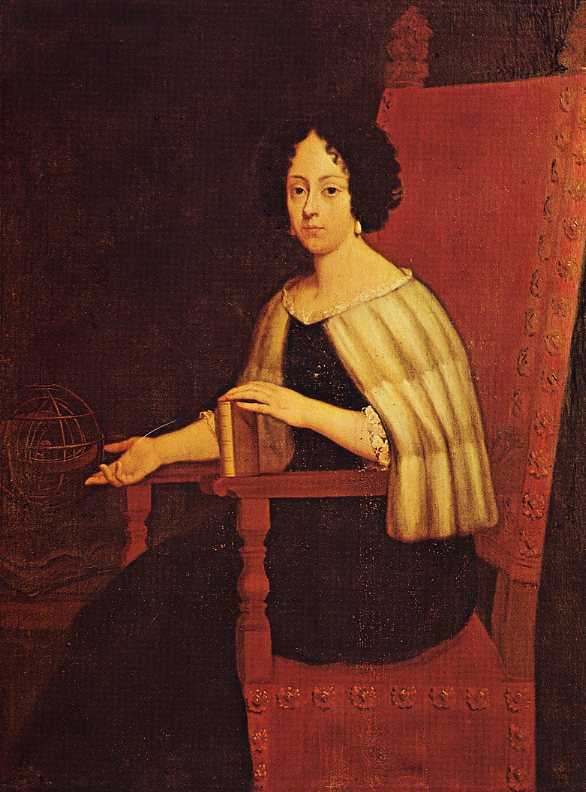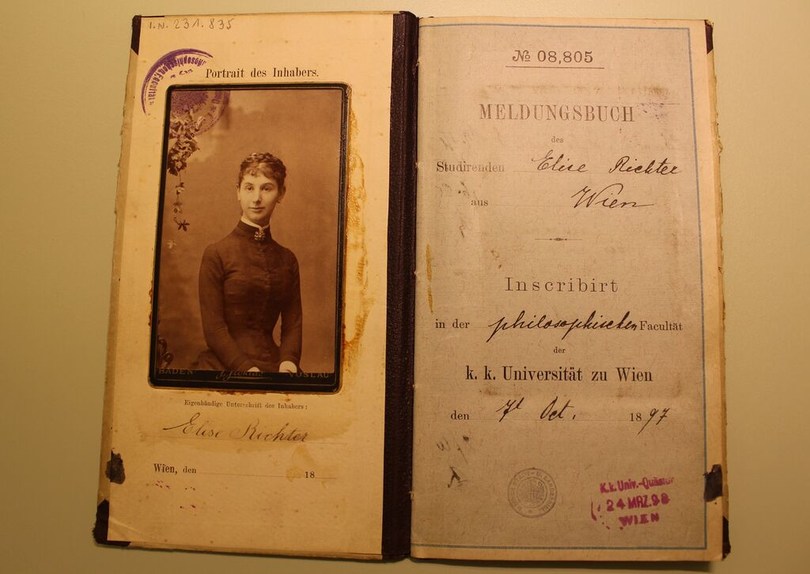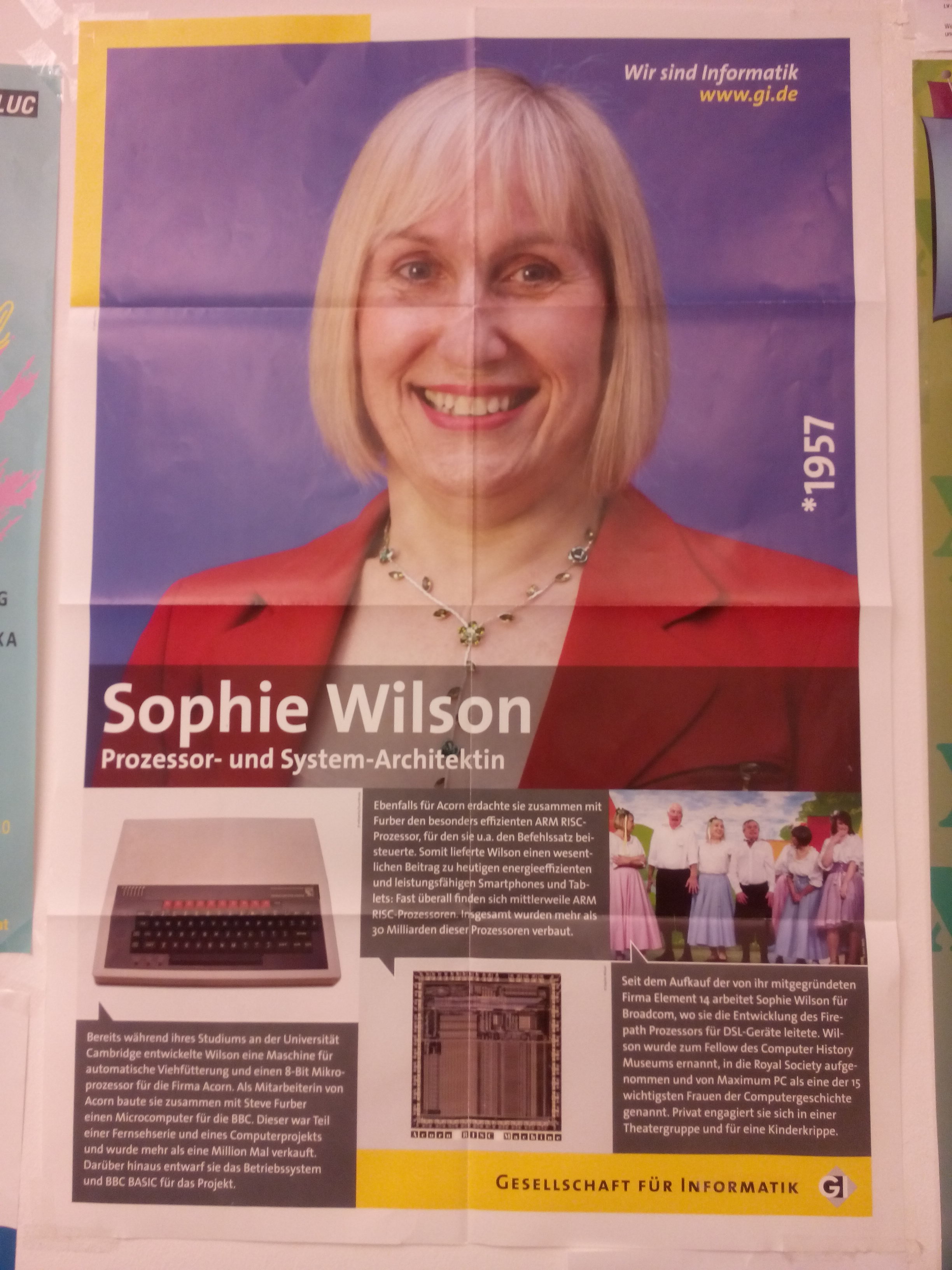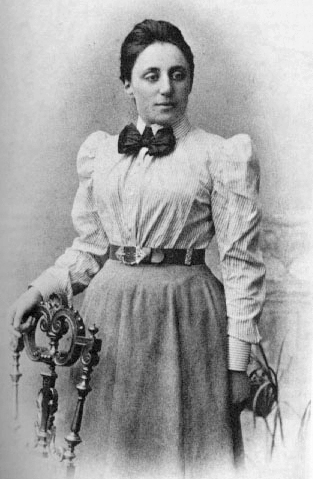The following text is a term paper I wrote in the spring term of 2015. The class I wrote it for is called “Rätsel, Erkenntnis, Wissen: Kulturelle Macht der Wissenschaften” (roughly translated: “Puzzle, Insight, Knowledge: Cultural Power of Sciences”). It is taught by Amelie Cserer every spring term at TU Wien as a soft skills/transferrable skills course. The description sounded very interesting to me, and the first session just made me more intrigued. You may notice that the teacher used the plural form of Wissenschaft (science) – she told us in the first session that this was kind of a statement to show that there is no such thing as “die Wissenschaft” (“the (one and only) science”), although people tend to use the word that way.
Continue reading Seminararbeit: Repräsentation von Gender in Science Fiction
Category Archives: Feminism
Role Model Sunday: Elena Cornaro Piscopia
 Elena Lucrezia Cornaro Piscopia, (5 June 1646 – 26 July 1684) was an Italian philosopher of noble descent, who was the first woman to receive an academic degree from a university. I discovered this excellent woman’s story while researching Laura Bassi.
Elena Lucrezia Cornaro Piscopia, (5 June 1646 – 26 July 1684) was an Italian philosopher of noble descent, who was the first woman to receive an academic degree from a university. I discovered this excellent woman’s story while researching Laura Bassi.
Elena was considered to be an expert musician. In addition to mastering the sciblis of her time-which means she mastered almost the entire body of knowledge-Elena mastered the harpsichord, the clavichord, the harp, and the violin. Her skills were shown by the music that she composed in her lifetime.
She was a member of various academies and was esteemed throughout Europe for her attainments and virtues. According to Margaret Alic, she became a mathematics lecturer at the University of Padua in 1678. The last years of her life were devoted to study and charity. She died at Padua in 1684 of tuberculosis, was buried in the church of Santa Giustina at Padua, and her statue was placed in the university.
By the advice of a friend of the family’s, she began the study of Latin and Greek and became proficient in these languages at the age of seven. She also mastered Hebrew, Spanish, French and Arabic, earning the title of “Oraculum Septilingue”. Her later studies included mathematics, philosophy, and theology. She was invited to be a part of many scholarly societies when her fame spread and in 1670 became president of the Venetian society Accademia dei Pacifici.
When the bishop of Padua learned that she was pursing a degree in theology, he refused on the grounds that she was a woman. However, he did allow for her to get a degree in philosophy. The degree was conferred on 25 June 1678, in Padua Cathedral in the presence of the University authorities, the professors of all the faculties, the students, and most of the Venetian Senators, together with many invited guests from the Universities of Bologna, Perugia, Rome, and Naples. The Lady Elena spoke for an hour in classical Latin, explaining difficult passages selected at random from the works of Aristotle. She was listened to with great attention, and when she had finished, she received plaudits as Professor Rinaldini proceeded to award her the insignia of the laurea, the book of philosophy, placing the wreath of laurel on her head, the ring on her finger, and over her shoulders the ermine mozetta. This scene is illustrated in the Cornaro Window in the West Wing of the Thompson Memorial Library at Vassar College.
Her death was marked by memorial services in Venice, Padua, Siena, and Rome. Her writings, published at Parma in 1688, include academic discourses, translations, and devotional treatises. In 1685 the University of Padua caused a medal to be struck in her honour. In 1895 Abbess Mathilda Pynsent of the English Benedictine Nuns in Rome had Elena’s tomb opened, the remains placed in a new casket, and a suitable tablet inscribed to her memory.
Role Model Sunday: Margaret Hamilton
 This woman’s story could be found in my (and probably your) facebook stream for a couple of months, on and off. The picture I’m posting here is way more recent than the famous one used in all the postings telling us about her greatest achievement, so you probably didn’t recognize here. The famous picture is that of a young woman, wearing big glasses and a striped dress, proudly smiling into the camera, standing next to a huge pile of documents.
This woman’s story could be found in my (and probably your) facebook stream for a couple of months, on and off. The picture I’m posting here is way more recent than the famous one used in all the postings telling us about her greatest achievement, so you probably didn’t recognize here. The famous picture is that of a young woman, wearing big glasses and a striped dress, proudly smiling into the camera, standing next to a huge pile of documents.
Meet Margaret Hamilton, the woman who sent the Apollo mission to the moon (and back again).
Margaret Hamilton had a B.A. in mathematics from Earlham College, and after teaching highschool mathematics for some time, she and her husband moved to Boston. The plan was for him to finish his graduate studies, while Margaret would be working to sustain them both, in order to finish a graduate programme in mathematics when he was done with his.
Hamilton popularized the term “software engineering” (coinedby Anthony Oettinger), and was one of those who developed important software concepts. Some of these are priority scheduling, end-to-end testing, and human-in-the-loop decision capability, such as priority displays.
As a working mother in the 1960s, Hamilton was unusual. She would bring her daughter Lauren to the lab on weekends and evenings. While the 4-year-old slept on the floor of the office, her mother programmed away. She loved the novelty of her job (“like the Wild West” is a term she used in an interview), and also liked the camaraderie. There were after-work drinks at the MIT faculty club, geek jokes and the like. At the lab, she said, she was “one of the guys.”
In 1965, Hamilton became responsible for the onboard flight software on the Apollo computers. Sometimes the pressure kept Hamilton up at night. Once, after a party, she rushed back to the lab to correct some code she’d suddenly realized was flawed. “I was always imagining headlines in the newspapers, and they would point back to how it happened, and it would point back to me.” (WIRED)
One day, when Hamilton’s daughter Lauren was playing with the MIT command module simulator’s display-and-keyboard unit. As she toyed with the keyboard, an error message popped up. Lauren had crashed the Apollo simulator by somehow launching a prelaunch program called P01 while the simulator was in midflight. There was no reason an astronaut would ever do this, but nonetheless, Hamilton wanted to add code to prevent the crash. That idea was overruled by NASA. They told Hamilton and her team over and over that astronauts were trained to be perfect, so they would never make that mistake. She wanted to add error-checking code to the Apollo system that would prevent this from messing up the systems. But that seemed excessive to her higher-ups. “Everyone said, ‘That would never happen,’” Hamilton remembers.
But it did happen. Five days into the historic Apollo 8 flight which brought astronauts to the moon for the first-ever manned orbit, the astronaut Jim Lovell inadvertently selected P01 during flight. This wiped out all the navigation data Lovell had been collecting. Without that data, the computer wouldn’t be able to calculate and execute the route back. But Hamilton and her team developed a plan based on her program note regarding the problem, and thanks to that —and Lauren—the Apollo astronauts came home.
Sources for this article:
Role Model Sunday: Laura Bassi
I heard about Laura Bassi first at University – there is a “Laura Bassi Competence Centre of Expertise” for Visual Analytics Science and Technology at the Faculty for Informatics. Then, some weeks ago, Laura Bassi popped up in my Facebook timeline as part of the minister for education and women’s (weird combo, I know!) ongoing series on women in history, #365Frauen (#365women).
So. Laura Bas si, born on 31 October 1711 to a wealthy family, she was tutored for 7 years as a teenager. She came to the attention of the future Pope Benedict XIV, who encouraged her scientific work.
si, born on 31 October 1711 to a wealthy family, she was tutored for 7 years as a teenager. She came to the attention of the future Pope Benedict XIV, who encouraged her scientific work.
At the age of 21, she was appointed professor of anatomy at University of Bologna, and one year later given the chair of philosophy, too. After Elena Cornaro Piscopia, 45 years before, Bassi was the 2nd woman in Europe to receive a degree from a university.
The defence of her degree, awarding ceremony, and first lecture in 1732 took place in the Palazzo Pubblico, one of the most important government buildings in Bologna. They were attended by “not only the university faculty and students, but also by principal political and religious figures of the city – the Papal Legate and Vice-Legate, the Archbishop of Bologna, the Gonfaloniere, the Elders, senators and magistrates. Additionally, ‘all the ladies of Bologna and all the nobility’.” (wikpedia)
In 1738, she married Giuseppe Veratti, whom she chose because he, “like myself, is advancing on the path of science andof whom, through long experience, I could be sure that he would not dissuade me from this.” (brochure of Laura Bassi Centres)
In the beginning of her professorship, she was restricted to teach only in occasional lectures. As of 1738, she was allowed to lecture from home on a regular basis and successfully petitioned the University for more responsibility and a higher salary to allow her to purchase her own equipment.
Bassi was mainly interested in Newtonian physics, teaching courses, carrying out experiments and writing papers on the subject for 28 years. In order to teach Newtonian physics and Franklinian electricity (both not included in the Bologna curriculum), Bassi gave private lessons. She wrote 28 papers, the majority on physics and hydraulics, but did not write any books. Although only a small number of her scientific works were left behind (she published only 4 of her papers), much of her impact is documented through her many correspondents in all of Europe – these included e.g. Voltaire and Alessandro Volta. Voltaire once wrote to her saying “There is no Bassi in London, and I would be much happier to be added to your Academy of Bologna than that of the English, even though it has produced a Newton”.
In 1745, Pope Benedict XIV established an elite group of 25 scholars known as the Benedettini (“Benedictines”, named after himself.) Bassi pressed hard to be appointed to this group, but there was a mixed reaction from the other academics. Ultimately, Benedict did appoint her, the only woman in the group.
In 1776, at the age of 65, she was appointed to the chair in experimental physics by the Bologna Institute of Sciences, with her husband as a teaching assistant.
Two years later, she died, having made physics into a lifelong career and broken a huge amount of ground for women in academic circles.
My sources for this text were wikipedia (https://en.wikipedia.org/wiki/Laura_Bassi) and the website (or rather, one of its brochures) of the Laura Bassi Centres of Expertise. These research centres, introduced by the Ministry of Economy, Research and Sciences in Austria, are headed by excellent women, creating an interface between science and economy. The seven Laura Bassi Centres conduct research in the areas of medicine, life sciences and IT.
Role Model Sunday: Elise Richter

Elise Richter was one of the first women to study at University of Vienna, starting in 1897. Of these 3 women, only Elise Richter’s student ID can still be found at the city’s public library at city hall.
Elise finished her studies of philosophy and romance languages in 1901. The Dean strongly opposed her receiving the venia legendi (right to teach courses), as he deemed it impossible for men letting a woman teach them. Still, in 1905 (or 1907, depending on the source) she received her Habilitation, and was appointed extra-ordinary professor in 1921 (with 50% of the votes against her) – she never made it to ordinary professor.
She founded the Association of Austrian Academic Women (Verband der Akademikerinnen Österreichs) and chaired it (from 1920 on, or from 1922 to 1930 – sources diverge again). As of 1928, she was in charge of the phonetic institute at University of Vienna. Her work was focused on linguistics (semantics, syntax, phonetics, …), but also included cultural and historic influences in her many publications (over 300). One thing she discovered was the influence of psychological processes on language.
As she was of Jewish ancestry, live became tough as of 1938. She lost her job at the University and could only publish in the Netherlands and Italy from 1940 to 1942. In 1942, she and her sister were moved to a Jewish home for the elderly. From there, they were deported to Terezín/Theresienstadt concentration camp in November 1942. Helene, an Anglist and critic (she published e.g. on Mary Shelley), died on November 8, 1942. Elise died on June 23, 1943.
In 2008, the City of Vienna renamed a street in the 21st district after Elise Richter.
Sources for this article were the City of Vienna’s wiki and wikipedia.
Elise Richter has been brought to my attention by a good friend, Thomas. He, too, loves Vienna – and every day, he publishes a factoid on the city on twitter, using #wienfakt (German only, sorry.). The picture source is his #twandertag storyify.
Role Model Sunday: Sophie Wilson
 Sophie Wilson is a British computer scientist known for designing the instruction set of the ARM RISC-processor. This processor nowadays is an important part of most mobile devices, as it makes tablets and smartphones faster and more energy efficient. She studied University of Cambridge and during her time as a student already developed a machine to automate cattle feeding as well as an 8-Bit-Microprocessor for Acorn. Later on, she and Steve Furber built a microcomputer for the BBC while working at Acorn.
Sophie Wilson is a British computer scientist known for designing the instruction set of the ARM RISC-processor. This processor nowadays is an important part of most mobile devices, as it makes tablets and smartphones faster and more energy efficient. She studied University of Cambridge and during her time as a student already developed a machine to automate cattle feeding as well as an 8-Bit-Microprocessor for Acorn. Later on, she and Steve Furber built a microcomputer for the BBC while working at Acorn.
Sophie has been named a Fellow of the Computer History Museum and was accepted into the Royal Society. Maximum PC (http://www.maximumpc.com/) in 2011 named her one of the 15 most important women in computer history. The picture shows poster printed by the german “Gesellschaft für Informatik” (https://en.gi.de/) as part of the series “faces of computer science”, detailing her career. Other persons featured in the poster series are Alan Turing, Ada Lovelace, Joseph Weizenbaum and Grace Hopper.
Sources for this article were the pictured poster and the Sophie Wilson wikipedia article.
Role Model Sunday: Emmy Noether
It’s been quite a while since I wrote the last RMS post, but that’s in parts due to my work for FemCamp Wien, so Feminism’s share in my life wasn’t reduced by even a minute 😉 Also, this post does happen to be posted not on a Sunday, because hell, I wrote it, and I’m happy about finishing it, and now here it is. Enjoy!

So, welcome again to the Role Model Sunday articles! This time, I’d like to talk a bit about Emmy Noether, a German mathematician. She is best known for her contributions toward the field of abstract algebra and theoretical physics. Pavel Alexandrov, Albert Einstein, Jean Dieudonné and others called her the most important woman in the history of mathematics. When she died, her obituary in the NY Times was written by Albert Einstein. Part of his theory of relativity are based on Emmy Noether’s work in the theory of invariants. Her work also helped develop ring theory into a major mathematical topic, and inspired many of her students and colleagues. Much of her own work was published not under her own name, but theirs.
Emmy’s father was Max Noether, also a mathematician, and professor at the University of Erlangen. Dismissing her initial plans of becoming a teacher of French and English, she studied mathematics in Erlangen. As women were excluded from academic positions at the time, she had to work without pay for 7 years after completing her dissertation in 1907.
In 1915, she was invited to the University of Göttingen, teaching courses as an assistant to David Hilbert. Her habilitation was approved of in 1919, allowing her to teach using her own name. Part of the discussion on if she should become a Privatdozent has been quoted as follows:
One faculty member protested: “What will our soldiers think when they return to the university and find that they are required to learn at the feet of a woman?”
Hilbert responded with indignation, stating, “I do not see that the sex of the candidate is an argument against her admission as privatdozent. After all, we are a university, not a bath house.”
(source: wikipedia)
Emmy Noether spent the winter of 1928-1929 in Moscow, coming in touch with and supporting the Russian Revolution and its ideas. Although politics never were that important to her, this interest of hers lead to her eviction from a pension lodging after people complained about a “Marxist-leaning jewess”.
In 1933, her jewish roots were the reason for Emmy Noether’s expulsion from teaching at University of Göttingen. For her, and other jewish professors, friends around the world tried to find new teaching positions. Two universities contacted Emmy Noether: Somerville College in Oxford (UK), and Bryn Mawr College in the United States. A grant from Rockefeller Foundation made it possible for her to take the position at Bryn Mawr, and she started to work there in late 1933.
She died in 1935, after surgery to remove a tumor from her pelvis.
My sources for this post were wikipedia and the MacTutor History of Mathematics at St Andrew’s College.
Role Model Sunday: Sheila Greibach
This, err, last week’s role model was pointed out to me – and about 180 other students – by our teacher in Theoretical Informatics and Logic (I might even write about her at some point): Sheila Greibach, researcher in formal languages, compiler theory and computer science.

After earning her A.B. and A.M. degrees at Radcliffe University in 1960 and 1962, she achieved her PhD at Harvard University in 1963. The title of her PhD thesis is “Inverses of Phrase Structure Generators”.
She continued to work at Harvard at the Division of Engineering and Applied Physics, until she moved to the UCLA, where she has been professor since 1970.
Other than the Greibach normal form, she is also known for Greibach’s theorem, stating that certain properties of formal language classes are undecidable.
More information on Sheila Greibach can be found at wikipedia.
Role Model Sunday: Anita Borg

This week’s role model was brought to my attention by Fachschaft Informatik, a group of students representing the Comuputer Sciences students at my university, helping with problems concerning curricula, courses, and so on. One of the rooms provided and used by FSInf is the Anita Borg room.
Anita Borg was a self-taught programmer, focusing on operating systems and memory systems. Upon realizing at a symposium in 1987 that there were incredibly few women in computing, she became an advocate for technical women. She founded a mailing list called Systers, which brought together women in technology. In 1994, together with Telle Whitney, Borg founded the Grace Hopper Celebration of Women in Computing, a conference by and for women in computer sciences. In 1997, Borg founded the Institute for Women in Technology, aiming to increase the representation of women in technical fields and to enable the creation of more technology by women. Anita Borg’s personal goal was to achieve a 50% representation for women in computing by 2020.
While reading up on her life, the second most interesting fact for me was that the mailing list she oversaw, while primarily focusing on communication of experts on technical things, tackled non-technical issues from time to time. For example, when in 1992 a Barbie doll hit the market that said “math class is tough”, the protest that started with the Systers list played a role in getting that phrase removed from Barbie’s microchip. This very much reminded me of a Simpsons episode, Lisa vs. Malibu Stacy. The most interesting fact was that Anita Borg obviously was a very active, motivated fighter for women in technology. This is a trait I very much like in people – talking about things might be interesting, but to actually change the state of something, things must get done.
After Anita Borg died of cancer in 2003, the Institute for Women in Technology was renamed to the Anita Borg Institute for Women and Technology by Telle Whitney, who took over as CEO and President in 2002. Lots of awards and scholarships are named in her honor, and while still alive, Anita Borg received Awards by the EFF (Electronic Frontier Foundation) and the Association for Women in Computing as well as an Honorary Doctor of Science and Technology degree by Carnegie Mellon University.
For more information, go read up at wikipedia (where I also found her picture).
Role Model Sunday: Cecilia Payne

Without even being awarded with a degree after completing her studies at Cambridge University (because women only receive degrees from Cambridge since 1948!), Cecilia Payne‘s dissertation was “undoubtedly the most brilliant Ph.D. thesis ever written in astronomy.” according to astronomer Otto Struve.
After her father died when she was four years old, her mother had to raise Cecilia and her 2 siblings on her own, thus deciding not to spend money on Cecilia’s college education, but on her brother’s (who became an archeologist). In 1919, Payne won a scholarship to Cambridge University, where she started to study botany and later on also physics and chemistry. Her London school did not teach either physics or chemistry, but botany, so this is where she discovered her first field of interest.
Realizing that she would not be able to work in research, but only as a teacher, in the UK, she decided to move to the US on a grant encouraging women to work at Harvard Observatory. She was the 2nd woman to work there, following Adelaide Ames.
In her work, Payne accurately related the spectral classes of stars to their actual temperatures. Her thesis established that hydrogen was the overwhelming constituent of the stars, and thus the most abundant element in the Universe.
Officially not having an official position, Payne remained scientifically active as a technical assistant to Harlow Shapley (the Director of the Harvard Observatory) from 1927 to 1938. When she was at one point considering to leave Harvard because of her low status and poor salary, Shapley made efforts to improve her position. In 1938 she was given the title of “Astronomer”, which she later asked to have changed to Phillips Astronomer. Until 1945, none of the courses she taught at Harvard were recorded in the catalogue.
she was the first woman to be promoted to full professor from within the faculty at Harvard’s Faculty of Arts and Sciences (1956). With her appointment to the Chair of the Department of Astronomy, she also became the first woman to be head of a department at Harvard.